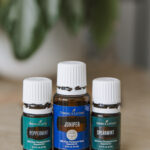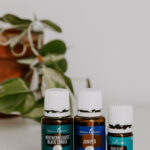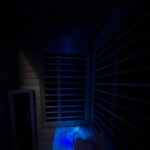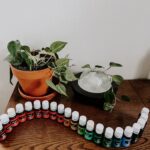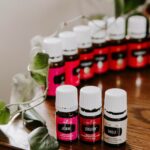Reading food ingredient labels is becoming the new normal. Many recognize the importance of knowing what’s in the food we consume, knowing it directly affects our health and well-being. But even those that don’t necessarily pay attention to the ingredient labels are aware of the hazards of certain products like cigarettes, bleach, gasoline, etc.
And yet, the chemicals in many everyday products go completely unnoticed. In this blog, I share everything you need to know about a toxic ingredient many of us are exposed to daily- fragrance.
What is Fragrance?
Chances are, you’ve seen this 9-letter word listed on products before. But what actually is it? Is it natural? Is it a chemical? These were questions I asked when I first began looking into low-tox living. My entire life, I’d seen fragranced products associated with natural scents like flowers, citrus fruits, vanilla, and more. I thought about the perfume ads with girls running through fields of flowers. The laundry detergent commercials with mothers wrapping their happy babies in clean towels. The body soap ads with people in gorgeous outdoor showers in tropical locations. All of this clever marketing led me to associate fragrances with natural aromas. I believed, like most people, that these products were safe to use. And yet- I couldn’t forget the slight stinging sensation I felt in my nose when smelling perfume. Or the headaches I’d get from air fresheners.
So what is fragrance? Although it may appear to be only one ingredient, it’s actually a blanket statement for 3,000+ different chemicals used to create a scent. You may also see it listed as perfume, parfum, and aroma. The specific ingredients are never disclosed because they are considered trade secrets. This creates a dangerous loophole in the industry.

Why its Harmful
Across multiple studies, fragrance has been linked to a staggering amount of health concerns. Ingredients used in fragrance have been classified as neurotoxins, carcinogens, allergens, hormone disruptors, and asthma triggers. About 95% of chemicals used in synthetic fragrances are derived from petroleum oil (crude oil) according to a report by the National Academy of Sciences (1).
Some alarming ingredients that can be found in fragrance –
- Carcinogens like styrene, methyl eugenol, pyridine, formaldehyde, and BHA
- Reproductive toxins like phthalates, lilial, and nonyphenol
- Neurotoxins like xylenes and phenol
- Skin allergens like linalool, hexyl cinnamal, geraniol, and HICC
So, why are these harmful ingredients allowed in everyday products? The fragrance industry regulates itself. I know, crazy right? Currently, the FDA does not require companies to disclose every ingredient. Safety testing is not required before products are sold to consumers. These products are not tested in labs. They’re being tested on us.
Where is Fragrance Found?
The short answer to this is- well, everywhere. Fragrance has made it’s way into most of our everyday products. This includes things like makeup, candles, deodorant, dish soap, sun screen, household cleaners, skin care products, laundry detergant, hand sanitizer, body soap, perfumes/colognes, bath bombs, hair products, self-tanners (the list goes on and on).
There are two different ways we are exposed to the toxins in fragrance. The first is through direct contact with the skin. Our skin is our largest organ. Anything that makes direct contact with our skin is directly absorbed into the bloodstream within 26 seconds. My skin crawls thinking about all of the times I used disinfectant wipes without wearing gloves, or sprayed perfume on my neck (directly on top of my thyroid gland).
The second way that we are exposed is through inhalation of VOC (volatile organic compounds). The same way we are exposed to second-hand smoke from cigarettes, we can also absorb these chemicals through our lungs when we smell things like candles or airfresheners.
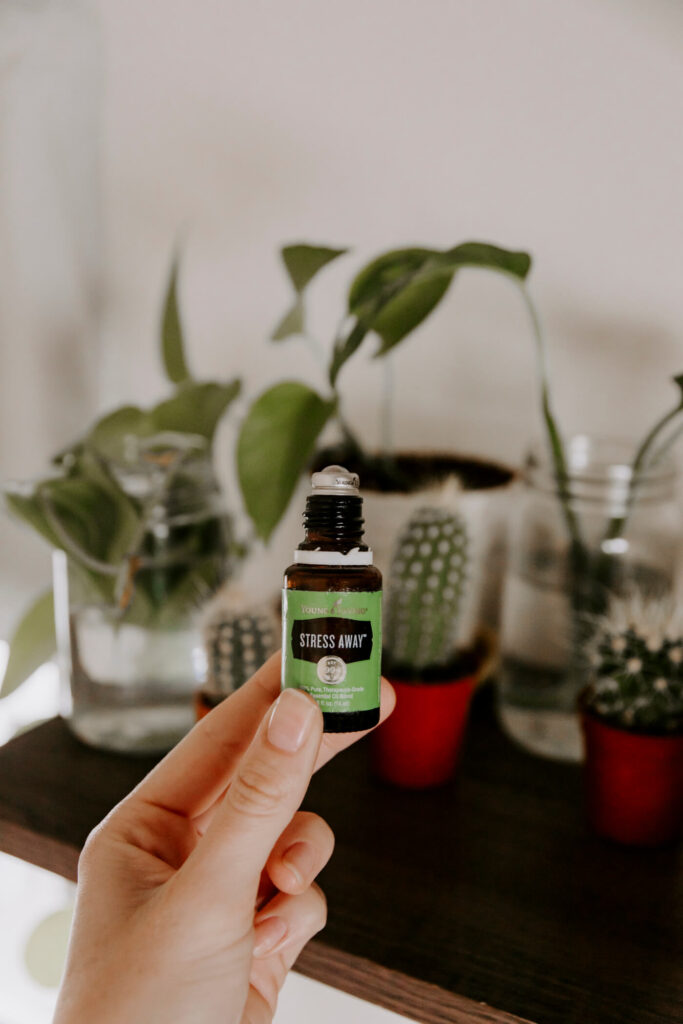
How to Avoid Fragrance
Although fragrance is found in many products, there are also companies that are conscious of toxic burden and determined to create beautiful, low tox products. One company that has heavily influenced my low tox journey is Young Living. Using the highest quality essential oils in the world, their products are always made with clean ingredients.
It is also incredibly easy to create low tox DIY’s to replace many everyday products (lucky for you I’m DIY obsessed, and will continue sharing blogs about my favs). Make sure to check out my mermaid hair spray DIY.
Creating a world that’s a little less toxic is one of my passions. I’m here to help you every step of the way on your low tox journey! Learn more about natural living here.




